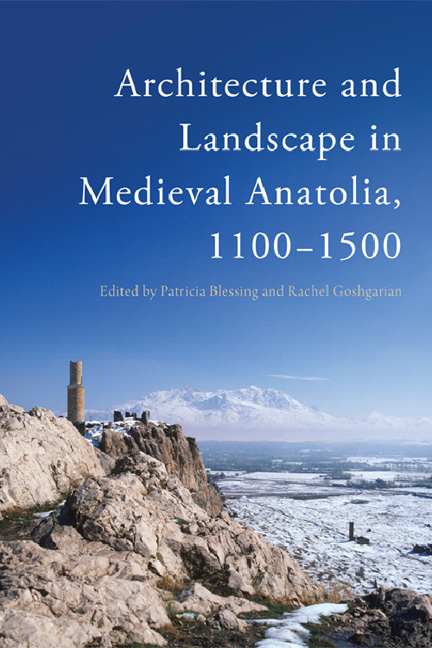Book contents
- Frontmatter
- Contents
- List of Illustrations and Tables
- Acknowledgements
- Foreword
- Map
- 1 Introduction – Space and Place: Applications to Medieval Anatolia
- Part I Building: Masons and Infrastructure
- 2 Craftsmen in Medieval Anatolia: Methods and Mobility
- 3 Stones for Travellers: Notes on the Masonry of Seljuk Road Caravanserais
- Part II Social Groups: Akhis and Futuwwa
- Part III Exchange: Islamic and Christian Architecture
- Part IV Frameworks: Language, Geography and Identity
- Notes on Contributors
- Bibliography
- Index
3 - Stones for Travellers: Notes on the Masonry of Seljuk Road Caravanserais
from Part I - Building: Masons and Infrastructure
Published online by Cambridge University Press: 03 January 2018
- Frontmatter
- Contents
- List of Illustrations and Tables
- Acknowledgements
- Foreword
- Map
- 1 Introduction – Space and Place: Applications to Medieval Anatolia
- Part I Building: Masons and Infrastructure
- 2 Craftsmen in Medieval Anatolia: Methods and Mobility
- 3 Stones for Travellers: Notes on the Masonry of Seljuk Road Caravanserais
- Part II Social Groups: Akhis and Futuwwa
- Part III Exchange: Islamic and Christian Architecture
- Part IV Frameworks: Language, Geography and Identity
- Notes on Contributors
- Bibliography
- Index
Summary
Road caravanserais represent possibly the most impressive and important construction programme that survives from medieval Anatolia. The majority of these structures date from the Seljuk period and some studies estimate that the Seljuks promoted the construction of approximately 300 road caravanserais, a remarkably high number considering the limited chronological timeframe of Seljuk rule in Anatolia. Most Seljuk caravanserais mark the communication axes connecting Konya and Kayseri to the Mediterranean and the Black Sea, and were built within one single century, that is, from the 1180s to the 1280s, when ‘Anatolia witnessed one of the most ambitious building programmes in Islamic history’ as Scott Redford has noted.
In this chapter, I argue that studying the archaeology of buildings can provide us with new kinds of analyses of road caravanserais through stratigraphic examination of the material evidence and investigation of the masonry techniques used. Focusing in particular on the analysis of masonry characteristics, this study seeks to provide new data on the relationship between the technical environment that characterised the construction of road caravanserais and the range of political, economic and social elements whose interaction determined the creation of these edifices.
The State of Research
Originally recorded and contemplated primarily in travelogues, a systematic analysis of the road caravanserais of Anatolia began only towards the middle of the twentieth century when the Turkish scholar Osman Turan6 and, most notably, German art historian Kurt Erdmann produced academic work on the structures. In the mid- to late 1950s, Erdmann conducted several field surveys that led to the publication of the first – and still fundamental – architectural study of Seljuk caravanserais; this work recorded both monuments that were extant on the ground when Erdmann conducted his research, and those that were known uniquely from written sources. Erdmann's endeavour stimulated further interest and work on Seljuk road caravanserais, primarily by scholars in Turkey. These studies mainly focused on the architecture of road caravanserais and on the search for yet unknown similar structures.
It is within this context that we must consider the catalogues of extant caravanserais and more detailed studies of a few individual buildings. Unfortunately, conceptual approaches to these monuments are still rare.
- Type
- Chapter
- Information
- Publisher: Edinburgh University PressPrint publication year: 2017

